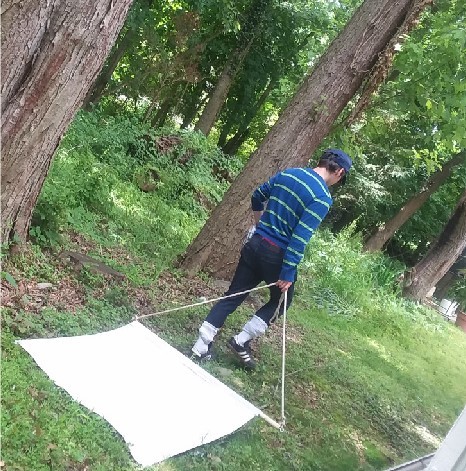During house visits, we will evaluate the risk in the yards by sampling for ticks and conducting a survey to learn about protective measures people undertake or are willing to implement. We will also evaluate mice and other animal activity in yards that could be transporting ticks, using harmless hair traps and trail cameras. This data will be combined with the data collected in parks and The Tick App to understand how can we better prevent tick exposure and provide custom-made solutions for Staten Islanders.
Project lead: Pilar Fernandez, PhD, Researcher, Nichar Gregory, PhD, Postdoc, and Michaela Mincone, Graduate Student
